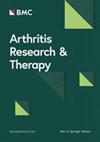Predicting abatacept retention using machine learning
IF 4.9
2区 医学
Q1 Medicine
引用次数: 0
Abstract
The incorporation of machine learning is becoming more prevalent in the clinical setting. By predicting clinical outcomes, machine learning can provide clinicians with a valuable tool for refining precision medicine approaches and improving treatment outcomes. This was a post hoc analysis of pooled patient-level data from the global, real-world ACTION and ASCORE trials in patients with rheumatoid arthritis (RA) initiating abatacept. Patient demographic and disease characteristics were input across 10 machine learning models used to predict 12-month treatment retention. Retention was defined as treatment for > 365 days or ≤ 365 days in patients who achieved remission or major clinical response (based on European Alliance of Associations for Rheumatology response criteria). The pooled dataset was split into a training/validation cohort for model development and a test cohort for an unbiased evaluation of performance. SHapley Additive exPlanation (SHAP) values determined the level of importance and directionality for key patient features predicting abatacept retention. The pooled ACTION and ASCORE dataset included 5320 patients with RA (mean [standard deviation] age 57.7 [12.7] years; 79% female). The 12-month abatacept retention rate was 61% (n = 3236) with a discontinuation rate of 39% (n = 2037). In the training set (n = 4218), the gradient-boosting classifier model demonstrated the best performance (testing accuracy: 62%). This model had an area under the receiver operating characteristic curve (95% confidence interval) of 0.620 (0.586, 0.653) and F1 score of 0.659 (0.625, 0.689) in the test set of patients (n = 1055). Using this model, the five most important variables predicting 12-month abatacept retention were low body mass index (BMI), low American College of Rheumatology functional status class, anti-citrullinated protein antibody (ACPA) positivity, low Patient Global Assessment, and younger age. The gradient-boosting classifier model identified key patient features predictive of abatacept retention from this large, real-world study population. The SHAP values conveyed the directionality and importance of BMI, functional status, ACPA serostatus, Patient Global Assessment, and age for abatacept retention. Findings are consistent with previous observations and help validate the machine learning approach for predictive modelling in RA treatment, and may help inform clinical decision making. NCT02109666 (ACTION), NCT02090556 (ASCORE).使用机器学习预测abataccept保留率
机器学习的结合在临床环境中变得越来越普遍。通过预测临床结果,机器学习可以为临床医生提供一种有价值的工具,用于改进精准医学方法和改善治疗结果。这是一项事后分析,汇集了来自全球、真实世界的ACTION和ASCORE试验的患者水平数据,这些试验针对的是启动abataccept的类风湿性关节炎(RA)患者。通过10个机器学习模型输入患者人口统计学和疾病特征,用于预测12个月的治疗保留情况。保留被定义为在达到缓解或主要临床反应(基于欧洲风湿病协会联盟反应标准)的患者中治疗bb0 365天或≤365天。汇集的数据集被分成用于模型开发的训练/验证队列和用于对性能进行无偏评估的测试队列。SHapley加性解释(SHAP)值决定了预测abataccept保留的关键患者特征的重要性和方向性水平。ACTION和ASCORE合并数据集包括5320例RA患者(平均[标准差]57.7[12.7]岁;79%的女性)。12个月abataccept保留率为61% (n = 3236),停药率为39% (n = 2037)。在训练集(n = 4218)中,梯度增强分类器模型表现出最好的性能(测试准确率为62%)。该模型在患者(n = 1055)检验集中的受试者工作特征曲线下面积(95%置信区间)为0.620 (0.586,0.653),F1评分为0.659(0.625,0.689)。使用该模型,预测12个月abatacept保留的五个最重要变量是低体重指数(BMI)、低美国风湿病学会功能状态等级、抗瓜氨酸化蛋白抗体(ACPA)阳性、低患者总体评估和更年轻。梯度增强分类器模型从这个庞大的现实世界的研究人群中确定了预测abataccept保留的关键患者特征。SHAP值传达了BMI、功能状态、ACPA血清状态、患者整体评估和年龄对阿巴接受保留的方向性和重要性。研究结果与先前的观察结果一致,有助于验证机器学习方法在类风湿关节炎治疗中的预测建模,并可能有助于为临床决策提供信息。Nct02109666(动作),nct02090556(得分)。
本文章由计算机程序翻译,如有差异,请以英文原文为准。
求助全文
约1分钟内获得全文
求助全文
来源期刊

Arthritis Research & Therapy
RHEUMATOLOGY-
CiteScore
8.60
自引率
2.00%
发文量
261
审稿时长
14 weeks
期刊介绍:
Established in 1999, Arthritis Research and Therapy is an international, open access, peer-reviewed journal, publishing original articles in the area of musculoskeletal research and therapy as well as, reviews, commentaries and reports. A major focus of the journal is on the immunologic processes leading to inflammation, damage and repair as they relate to autoimmune rheumatic and musculoskeletal conditions, and which inform the translation of this knowledge into advances in clinical care. Original basic, translational and clinical research is considered for publication along with results of early and late phase therapeutic trials, especially as they pertain to the underpinning science that informs clinical observations in interventional studies.
 求助内容:
求助内容: 应助结果提醒方式:
应助结果提醒方式:


